INDIAN ARMED FORCES CHIEFS ON OUR RELENTLESS AND FOCUSED PUBLISHING EFFORTS

The insightful articles, inspiring narrations and analytical perspectives presented by the Editorial Team, establish an alluring connect with the reader. My compliments and best wishes to SP Guide Publications.

"Over the past 60 years, the growth of SP Guide Publications has mirrored the rising stature of Indian Navy. Its well-researched and informative magazines on Defence and Aerospace sector have served to shape an educated opinion of our military personnel, policy makers and the public alike. I wish SP's Publication team continued success, fair winds and following seas in all future endeavour!"

Since, its inception in 1964, SP Guide Publications has consistently demonstrated commitment to high-quality journalism in the aerospace and defence sectors, earning a well-deserved reputation as Asia's largest media house in this domain. I wish SP Guide Publications continued success in its pursuit of excellence.
- Operation Sindoor: Resolute yet Restrained
- India’s Operation Sindoor Sends a Clear Message to Terror and the World – ‘ZERO TOLERANCE’
- Japan and India set forth a defence cooperation consultancy framework, talks on tank and jet engines
- Terrorist Attack in Pahalgam in Kashmir: Unfolding a long surgical war against PAK
- Lt General Pratik Sharma takes over Command of Indian Army's Northern Command
More Teeth for Indian Navy
The requirement for India is to define its role within its IOR strategy and keep providing more teeth to the Indian Navy in keeping with the expanding threats
 |
The Author is Former Director General of Information Systems and A Special Forces Veteran, Indian Army |
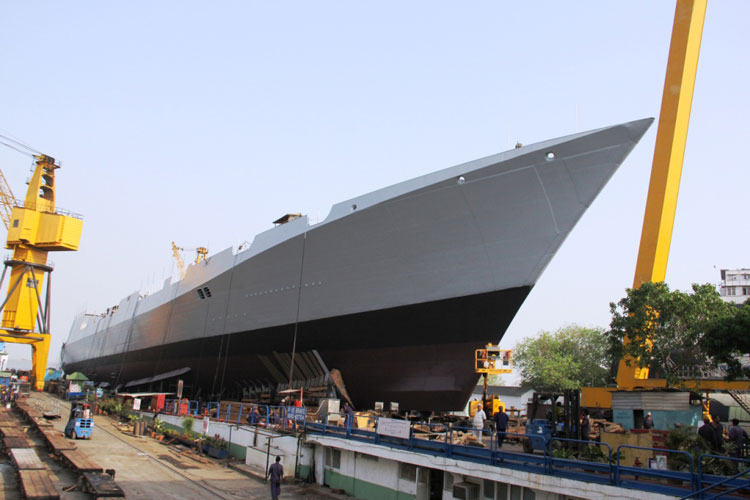
In the backdrop of mounting tensions in the Indo-Pacific region, the Chinese Navy commissioned three main battleships on April 25, 2021 at Sanya in Hainan naval facility in the disputed South China Sea (SCS). China’s new strategic nuclear submarine Project 094A "Jin" hosts solid-propellant intercontinental missiles JL-3 with a range of 10,000 km, which are capable of hitting targets anywhere in the US. The new submarine was showcased at the anniversary celebration of the formation of the PLA Navy on April 30, 2021. Project 094A has rectified the key flaw of noise by improving the hydrokinetic and turbulent systems. This allows mounting of the more powerful JL-3 missiles with multiple warheads. The previous version could only accommodate JL-2 missiles capable of reaching the northeastern territories of the US. In terms of power, the JL-2 is comparable to 67 bombs dropped on Hiroshima.
The Indian Navy is expected to get delivery of 45,000-tonne indigenous INS Vikrant and 7,500-tonne INS Visakhapatnam stealth guided missile destroyer (Project 15B) by end-2021
Presently, China’s naval fleet has six submarines of modifications 094 and 094A. Two more missile submarines are under construction to replace the obsolete 092 class submarines. For future operations, China is designing nuclear submarines under Project 096. These submarines will be designed to carry 24 x JL-3 missiles, which is six more than the submarines under 094 modifications. Simultaneously, China and Turkey are helping Pakistan enhance its naval capabilities. China began construction of the third Type-054A frigate for Pakistan with the keel laying ceremonies held on May 1, 2021 at the Chinese Shipyard Hudong Zhonghua (Shanghai). Simultaneously, Turkey began production of the second MILGEM-class corvette for the Pakistani Navy at the Turkish Naval Shipyard INSY (Istanbul).
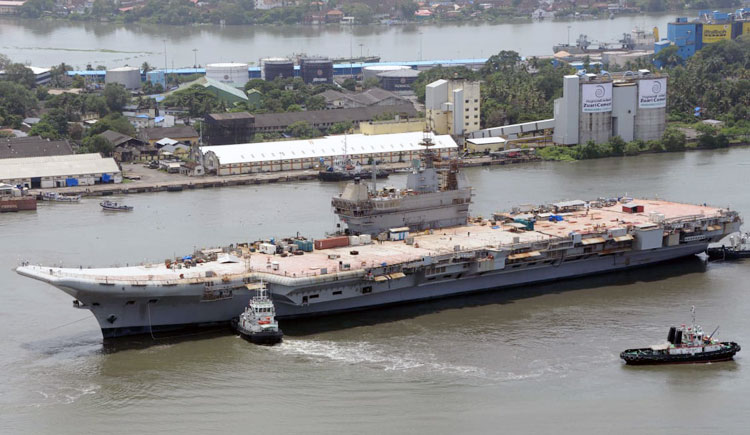
India too is focusing on enhancing the combat capabilities of the Indian Navy. The Cochin shipyard is to shortly commence final trials of INS Vikrant as precursor of handing over the aircraft carrier to the Navy. The Indian Navy is expected to get delivery of 45,000-tonne indigenous INS Vikrant and 7,500-tonne INS Visakhapatnam stealth guided missile destroyer (Project 15B) by end-2021. INS Visakhapatnam is to be formally commissioned into the Navy next year since contractual clauses come alive once the warship is handed over to Indian Navy but commissioning takes times as the vessel is to be tested by the Navy for its capabilities. The Mazagon Dockyards will complete trials of INS Visakhapatnam and deliver the stealth destroyer close to the Indian Navy Day on December 4, 2021.
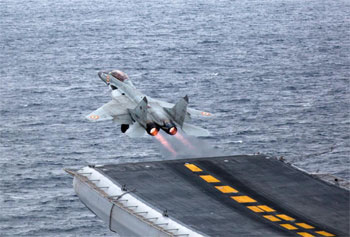
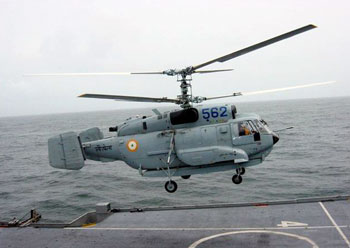
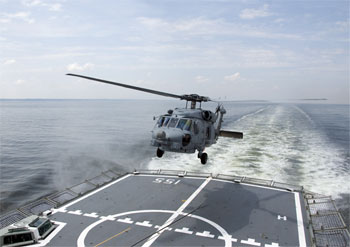
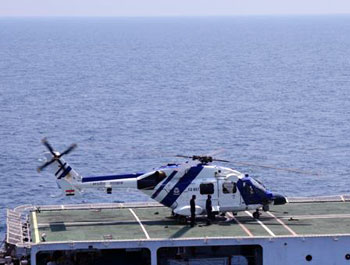
Powered by General Electric turbines, INS Vikrant will carry two squadrons of MiG-29K fighters and 10 x Kamov Ka-31 helicopters. The aircraft carrier strike force will have a range of over 15,000 km with Barak surface to air missile to give aerial protection to the vessel. INS Visakhapatnam’s main attack weapon is anti-ship and land attack BrahMos cruise missiles apart from torpedoes for anti-submarine warfare. It has also been covered in these columns elsewhere that the Indian Navy is to acquire 24 x MH-60R Seahawk helicopters from the US, six of which will be delivered within 2021. These will replace the ageing Sea King and Kamov helicopters. It goes without saying that the aircraft carrier INS Vikrant will be sporting the MH-60R Seahawks that can undertake multiple missions including anti-submarine warfare (ASW), anti-surface warfare (ASuW), surveillance, communications relay, search and rescue (SAR), naval gunfire support (NGFS), personnel transport, vertical replenishment (VERTREP) and logistics support.
Indian Navy is to acquire 24 x MH-60R Seahawk helicopters from the US, six of which will be delivered within 2021
Media reports of May 1, 2021, confirm that the Advanced Light Helicopter (ALH) Dhruv Mk-III-MR of Hindustan Aeronautics Limited (HAL) has successfully demonstrated its “deck-operations” capabilities like landing on deck, folding of blades, storing the helicopter inside the onboard hangar and hot refueling with engines running on the deck. The ship-borne trials off the Chennai coast in collaboration with the Indian Coast Guard concluded recently. Some of the missions that were successfully executed included surveillance, search and rescue, antipollution to address oil spillage and the like, Dhruv MK-III-MR is equipped with advanced surveillance radar that can detect and identify ships and boats up to a range of 120 nautical miles. It can closely monitor even the smallest of the vessels at distances as far as 30 nautical miles.
Addressing the inaugural session of Chiefs of the Air Staff Conclave at Aero India 2021, Defence Minister Rajnath Singh said on February 3, 2021, "Geopolitically India is a reliable partner in the Indian Ocean Region (IOR) and can take on the role of being the net security provider in the region.” The Conclave had physical representation from 26 countries, while 14 were in attendance virtually. The strategic importance of IOR is ever increasing to the world order in general and Indian sub-continent in particular. Alfred Thayer Mahan had famously said in 1897, “Whoever controls the Indian Ocean, will dominate Asia. This ocean will be the key to the seven seas in the 21st Century. The destiny of the world will be decided on its waters.”
Advanced Light Helicopter (ALH) Dhruv Mk-III-MR of Hindustan Aeronautics Limited (HAL) has successfully demonstrated its “deck-operations” capabilities like landing on deck, folding of blades, storing the helicopter inside the onboard hangar and hot refueling with engines running on the deck
India’s central position in IOR lends it immense advantages and its role as a net security provider is more than acknowledged. At the same time, India faces mounting challenges at sea from China and Pakistan not to talk of America’s Joe Biden administration’s ‘America First’ policy which relegates the IOR over the challenges in the South and East China Seas. A secure IOR is the key to ensuring security of India’s national interests. It is, therefore, essential for India to assume the role of a net security provider in the region. The requirement for India is to define its role within its IOR strategy and keep providing more teeth to the Indian Navy in keeping with the expanding threats. Finally, it is not providing more punch to the Navy only but optimising our island territories for naval operations and converting the Andaman and Nicobar Islands into a springboard for offensive actions whenever the need arises.





